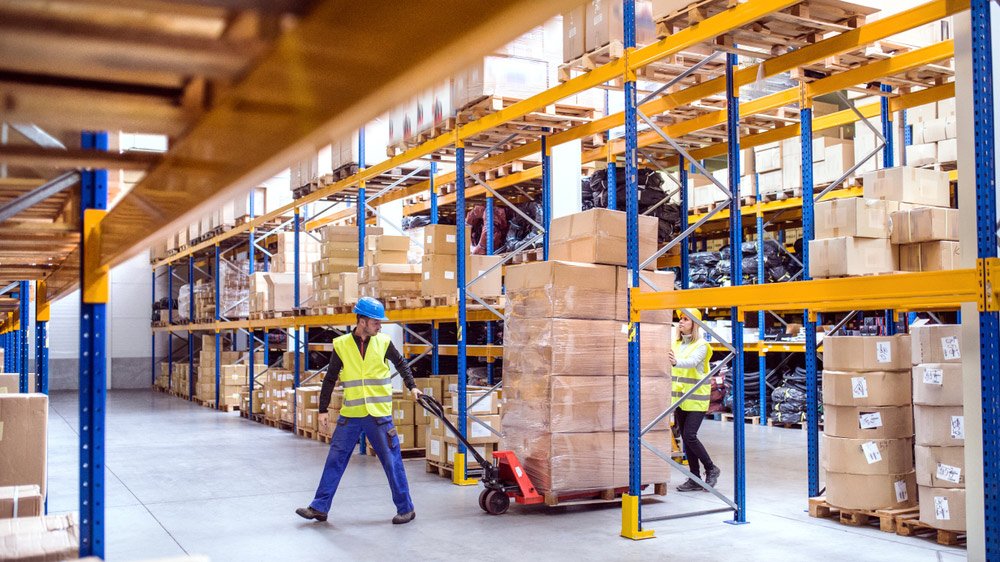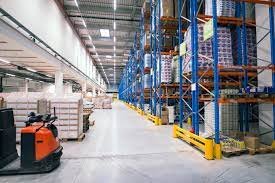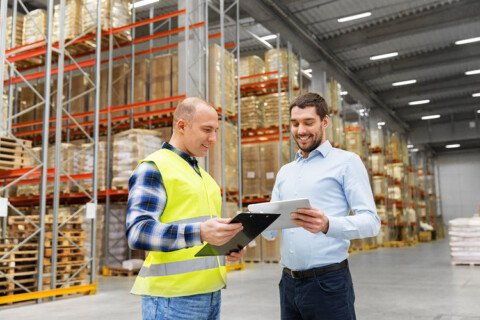Indian warehousing and logistics sector have demonstrated resilience and continued growth, despite the economic headwinds brought upon by the COVID-19 pandemic. Factors which contributed immensely to this remarkable growth are growth in e-commerce, digitalisation and government’s highly ambitious initiatives like ‘Atmanirbhar Bharat’ and ‘Ease of Doing Business’. Large-scale development of Grade A warehouses, logistics parks, dedicated freight corridors and world-class infrastructure by the private players supported by government policies has given a much-needed fillip to the sector and attract more and more foreign investors who are bullish on India as a industrial and manufacturing hub and ready to pour billions into India in a variety of service sub-sectors indicating sustainable growth. Amidst the pandemic, industrial real-estate has truly become the next frontier of investments and development. Ritika Arora Bhola reports…
Indian warehousing and logistics sector, with its outstanding contribution especially during the pandemic, is all set to make a global benchmark in the coming years. According to research reports, the sector is expected to attract nearly US$10 billion investments over the next 4-5 years.
The COVID-19 pandemic has resulted in fueling the growth of the e-commerce logistics sector. E-commerce players are seeking alternative warehousing locations to help in the continuity of their business, along with mitigating delivery delays. According to a report published by Unicommerce, as of June 2020, India’s e-commerce industry noticed an overall order-volume growth of 17 per cent post COVID-19 outbreak.
“While manufacturing and other industrial activities encountered a slowdown due to the pandemic, the logistics industry has been on the frontline since the beginning of the unprecedented crisis, ensuring supply chains remain intact,” says Abhijit Malkani, Co-CEO and Country Head, ESR India. “The pandemic has actually accelerated the scope and the pace of e-commerce adoption, facilitated by increased digital penetration, expansive internet data coverage, and rising consumerism. India’s logistics industry has been not only been successful in generating employment but is also working towards optimising last-mile delivery, efficient transportation, shorter delivery timelines, etc.”
“Favourable policies are helping the industry to move from a ‘tax planning’ to a ‘supply chain planning’ efficiency model,” is what Ashish Sharma, Director– Contract Logistics for CEVA Logistics (India) feels. In addition, he says, changing consumer behaviour is encouraging e-commerce buying patterns. All these factors require a very well-oiled and agile supply chain, meaning the supporting infrastructure, in terms of transport and storage should be highly efficient, scalable, and accessible. As a result, we see growth in the warehousing sector with a large number of companies looking to consolidate their facilities and aspiring for more and more tech-driven facilities. E-commerce is pushing the supply chain to gear up for servicing tier II and III cities, resulting in the growth of efficient and scalable warehousing across locations within India.”
Research reports from JLL India Industrial Services notifies that 2020 witnessed a 13 per cent y-o-y growth in total stock in Grade A and B warehousing space in top eight cities. The overall warehousing space stands at 238 mn sq ft in 2020 compared to 211 mn sq ft in the previous year. Vacancy rate in warehousing segment has hovered around 10 per cent for the last 5 years and has shown the same tendency even during 2020. Interestingly, with factors such as, 100 per cent FDI and long-time leases on logistics and warehousing real-estate, the investment is facilitating a robust growth of good quality Grade A warehouses.
According to Chandranath Dey, Head- Operations & Business Development, Industrial Services, JLL India,“During 2020, end-users/tenants continued to look for new and innovative ways for taking up spaces on short-term or temporary leased tenure of 9 -12 months—for further renting out any such white/unused spaces on sub-lease—in existing leased out models. In Q4, the market started gaining momentum with highest supply and absorption in 2020 post COVID-19 lockdown.”
“Sectors such as e-commerce, pharmaceuticals and FMCG are witnessing an increased growth with specialised demand of warehousing spaces including cold storage and in-city warehousing. This has increased an uptake in demand of urban logistics and cold chain infrastructure. These trends have resulted in transformation of the logistics sector from a supporting service sector into an essential and mainline sector.”
Importantly, investors are hopeful of the warehousing segment emerging stronger from the crisis globally and institutional investors are expected to continue to acquire warehousing assets in the coming years. In light of the growing demand and supply dynamics, India’s warehousing sector has already evinced significant interest from local and global investors.
Reportedly, India’s warehousing market is expected to be an estimated US$12.2 billion in 2020, growing to US$19.5 billion by 2025. This kind of growth is expected to come from development of large logistics parks to support growing space requirements, from improving allied infrastructure such as road, rail and communication networks, while ensuring the availability of a trained workforce.
Abhijit Verma, Executive Director & CEO of Avigna Group agrees. “Overall quality of assets has improved due to which longevity, safety and security has increased. The quality of Grade A warehouses are now as per the International standards which is giving confidence to more investors to invest and even attracting MNC clients who demand such facilities. In 2020, warehousing industry in India was valued at Rs 1,050 billion and expected to grow at the CAGR of 14 per cent between 2021 and 2025 to reach a value of Rs 2,028 billion. With this rapid growth and modernisation happening in the warehousing sector, young professionals are also considering this as one of the potential career opportunities.”
“The warehousing industry underwent a radical shift in the past decade fuelled by increasing demand for Grade A spaces. Interest from institutional investors wanting to invest in modern assets with higher yield grew more, supported by reforms and infrastructure developments introduced by the government,” says Malkani. “Increased investments have led to the development of quality assets with international standards for global companies to expand their operations in India. At present, investors are upbeat about the warehousing sector due to the continued growth of the e-commerce industry leading to an increase in demand for Grade A facilities.”
“Additionally, availability of quality infrastructure, reforms to further enhance Ease of Doing Business will attract international players and provide the necessary impetus to fuel the growth of manufacturing in India.”
Dey takes into account the same. “There has been an increased demand for international standards of compliance, human safety, hygiene and technology-solutions in terms of warehousing requirements from global manufacturers and occupiers. This is in line with the affinity being shown towards Grade A warehouses with a shift towards technological advancement and automation in terms of modernisation and optimisation. Built-to-suit, plug-and-play facilities developed across the country by large developers are being provided to international companies who may be facing land-related issues while setting up any asset.”
In fact, with modernisation and technological upgradation, Grade C warehouses are also coming into Grade A and Grade B category, says Sharma. “The structure and quality of construction of warehouses has improved drastically. For instance, traditionally, warehouses were just of 7-8 mt in height but at present, it is 12-13 mts whereas the throughput capacity has reached 7-9 tonnes from previous 2-3 tonnes.”
“In 2015, Grade A consisted of only 3 per cent of warehousing space which has gone up by 10 per cent in 2019 and this clearly indicates that the sector is not only growing but is getting more organised.”
Tapping demand to improve customer service and operations
The Indian warehousing market is now at a crucial point in its evolution. Modernisation, automation and tech-enabled facilities are an area with huge growth potential and that is something operators have well understood. This alone is a prime factor drawing the interest of big foreign manufacturing companies to invest in the Indian market.
Dey explains, “With a wider internet penetration, technology enabled growth drivers like automation, real-time tracking, RFID for automated data collection and stock identification are becoming increasingly popular. Furthermore, modern Warehouse Management Systems (WMSs) and other IT driven solutions are helping create an efficient warehousing network that provides integration with automatic material handling equipment, cross-docking, yard management, labour management, billing and invoicing, etc.”
“However, under the present working conditions, the job in a warehouse is not very attractive for skilled young people. Although with the changing design and work environment of logistics centres and logistics parks, there is still a long way to go.”
“A well-trained workforce is a challenge in this sector,” Sharma agrees. “We have an unskilled, untrained labour class working in the warehouses. There is no formal education or training given to the warehouse operators. The industry needs to catch up fast on this aspect in order to succeed.”
The change happens to take place. Industries are experiencing competition to secure warehouse labour and are in the race to win an available skilled workforce. To worsen this impasse, customer’s expectations about delivery time grew exponentially in 2020. Businesses try to deliver continuous and in-time operational recovery whilst creating work conditions that make it simpler to attract, train and retain associates.
Malkani says, “Companies will widely adopt automation to reduce human contact, enable safer practices and achieve consistency and efficiency in their operations. Modern warehouses, today, are employing skilled workforce to adapt to automated processes. Consolidated, large scale industrial and logistics parks compared to standalone buildings will deliver operational efficiency, implementation of sustainable practices, shared costs, secure and digitised premises and create more employment opportunities in surrounding regions,” points out Malkani.
What also needs to be discussed and addressed is storage with respect to agricultural warehousing, which is one of the primary concerns, especially for the government as there are several loopholes that exists. From agricultural produce to cold chain and industrial goods to e-grocery product basket, demand will determine the diversification and restrcuturing of every warehousing asset. This would eventually mean that customers, irrespective of where they live, will get what they want, along with the benefits of improved logistics cost efficiencies.
According to the data released by the United Nations Food and Agricultural Organisation (FAO), more than 40 per cent of the food produced is wasted at the consumer and retail level.
“Revamping agricultural warehousing in a revolutionary manner is the need of the hour to have a positive domino effect,” says Verma. “The exigency to increase the scientific storage capacity of agricultural products stems from the fact that India has an ever-growing population to cater to, along with the rise in production capacity since the green revolution.”
“Although India’s entry is late in the world of modern warehousing, the sector is fast adapting and quickly accelerating to catch up to the standards, in the next 2-3 year’s time.”
Strategy for a new India
At present, the Indian warehousing sector is at an inflection point and is expected to grow at a CAGR of more than 20 per cent in the coming years. The sector will have more of Grade A warehousing and logistics facilities in the country in the coming years, making the most of the conducive global environment to attract Foreign Direct Investments (FDI). Providing tax incentives to foreign investors to invest in areas that need funding such as infrastructure appears to be working in attracting investments such as the ones from the Abu Dhabi sovereign wealth fund.
“The warehousing sector is one of the hottest spaces for the investors right now,” Verma says. “2015 onwards, the sector has seen an average investment of approximately US$2 billion. The investors list includes some of the top foreign alternative investment firms from Singapore and UAE as well as many leading domestic players are making mega investment in the warehousing sector in India,” he informs.
According to Malkani, supportive government policies like conferring infrastructure status to the logistics sector, and initiatives to create multimodal logistics parks, enhance cargo movement through development of roadways, special cargo trains for agriculture and food transport, etc. are set to impact the growth of the sector, making it very attractive among large investors with long-term capital commitment.
In fact, government’s recent initiative, ‘Atmanirbhar Bharat’ (Self-Reliant India) also focusses on limiting imports and increasing domestic manufacturing capabilities. The recently introduced Production-Linked Incentives (PLIs) in various sectors such as electronics, pharmaceuticals, food products, white goods, telecom and networking products, auto components, etc. are also targeted towards attracting global manufacturers and choosing India as the preferred destination.
According to the JLL Research, Logistics and Industrial assets accounted for 16 per cent of global investments in 2020, an increase from 10 per cent in 2010, while the share of office assets reduced from 40 per cent in 2010 to 35 per cent in 2020.
“During 2016-2020, several global funds with marquee developers have formed platforms worth US$12 billion for deployment in dedicated asset classes, where warehousing accounted for the largest share of 43 per cent. Many large international players are now actively entering in the Indian warehousing market,” adds Dey.
“The liquidity infusion by global investors is prompting the market to develop more Grade A warehousing space. Foreign investment is largely coming in by partnering with a local developer or a global warehousing operator. Increased capital will ensure more quality space is being built to fulfill the demand for warehouses near emerging urban areas across the country,” he says.
The larger picture and path-dependencies
By the time all of this unfolds to its full potential, no other market in the world in terms of consumption would be as big as India. Going by global industry projections, India’s population will be 1.6 billion by 2050 which means one in three middle-class consumers in the world, would be an Indian. The retail segment alone is likely to be worth US$8 to 10 trillion.
Given India’s renewed vision to position itself as a strong market in global value chain, this appetite is expected to grow considerably.
Modern-day Grade A warehouses, automated material handling solutions, smart logistics and supply chain operations—complementing dependence on online shopping and time bound (even same day) deliveries—have today become the buzzwords of the industry.
“The interface of technology is a new change. Shift in buying behaviour from physical stores to e-commerce platforms and direct-to-consumer via mobile devices has led to demand of more storage space than ever before,” Verma says. “Price is no longer a competitive differentiator as quick shipping is. This has led to setting up of warehouses in even tier I and II cities which was otherwise concentrated around the business corridors of metros.”
“Cold storage has become a crucial asset class during the pandemic, fuelled by online grocery commerce and pharmaceutical companies. The shift from Grade B to Grade A expedited during the pandemic with companies wanting to consolidate their operations and implement automation and digitisation,” highlights Malkani.
“A major trend observed in the warehousing industry is the growing demand for ‘Ready Spaces’ or buildings with a shorter delivery timeline at select tier I and II cities to absorb the rising demand created by the burgeoning e-commerce industry,” he says. “Construction delays and disruptions have contributed to this trend.”
“The pandemic has led to a surge in grocery commerce and delivery of essentials. With last-mile delivery playing an instrumental role, in-city distribution has become the need of the hour,” he explains. “Multilevel warehousing is likely to gain prominence in the future.”
Trends Report
As these trends collide, the sector and its stakeholders must prepare for a number of strategic imperatives. Key among these are transformative mega trends, and internal challenges, with so many economic and social shifts set to occur—the evolution of millennials, the growth of people and their aspirations, and increasing digital divides. Last, businesses will face internal challenges as job automation and acceleration reconfigure the workforce, along with the urgency of corporate reskilling.
Sharma jots down a few trends set to redefine the next phase of logistics and warehousing and business sustainability:
- Larger facilities due to customers looking for consolidation
- Multi-user facility or co-warehousing facilities rather than multi-customer and stand-alone facilities—as cost competitiveness and demand fluctuations may push customers to look for variable, rather than fixed overhead, logistics costs
- Technology-driven facilities, with the advent of AI, IoT, and ML will ensure higher productivity, accuracy, and faster turnaround of inventory
- Cold chain facilities will expand, especially to support perishable and healthcare sector consumer demands
- Better quality warehouses, with green initiatives supporting a better working environment for the workforce and reducing operating expenses
Importantly, Sharma says, rental prices for warehousing may soar due to real-estate prices going up. “Rising rentals may also push operators to work on improving utilisation of the space both horizontally and vertically and to review the optimisation of the rest of the supply chain to cut down on inventory pile up at the warehouse, ultimately saving cost by eliminating waste.”
Meanwhile, Dey points out three key themes that are guiding growth and investment decisions:
- In-city warehouses
Many e-commerce and 3PL companies started opting for in-city warehousing to reduce delivery times and for last-mile deliveries.
In-city warehousing is being seen as an important infrastructural requirement, especially in the major consumption centres, where delivery timelines are shrinking from ‘next-day’ to ‘within hours’.
- Rise of omni-channel retailing
Omni-channel retailing is expected to help in optimising inventory holding costs, operating costs and real-estate costs while increasing brand prominence and consumer base across the country.
With the focus on omni-channel, customers expect new alternatives such as buying online and pickup in-store or ship from store. Effectually, this transforms a traditional retail store into a fulfilment centre.
- 3PL driving major warehousing demand
Industry estimates reveal that the 3PL sector in India is set to triple in next few years, i.e from US$2.1 billion in 2018 to US$6 billion in 2025. Considering that 3PL brings in the necessary economies of scale for multi-tenant sites, the potential growth is significant.
It contributed to nearly 35 per cent of the total net absorption in 2020, highest among all the other sectors. Demand from 3PL has increased as different sectors such as e-commerce, engineering, electronics and white goods are routing through 3PL. This in turn, may lead to increase in space demand from 3PLs in 2021 as many large and medium manufacturing operations may offload part of their inventory management to optimise the cost.







